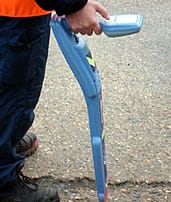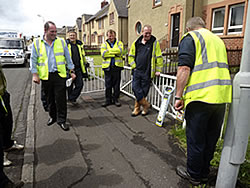The Health and Safety Executive HSG47 is aimed at all those involved in the commissioning, planning, managing, and carrying out work on, or near, underground services, as well as the owners and operators of the services. Following the guidance is not compulsory, unless otherwise stated, but if you do follow the guidance, under normal circumstances you will be doing enough to comply with the law. To quote the HSE "Health and safety inspectors seek to secure compliance with the law and may refer to this guidance".
It seems that the HSE is saying that, putting it politely, you would be doing yourself – and everyone else – a disservice by failing to follow the guidance provided. It further states "Underground services are widespread. Assume they are present unless you have been shown otherwise". That is an extremely sensible comment, since underground services can be found absolutely anywhere – even in an apparently open field.
One of the major causes of injuries – many severe – is striking electric cables, Typical injuries are burns to the hands, face, and body, while electric shock is also possible, but less likely. Other nearby services may also be damaged, and these include plastic gas pipes. Damage to these can cause explosion and fire. There are two kinds of damage – damage that causes an immediate leak, and damage that causes a leak some time later. For instance, poor reinstatement may leave a pipe insufficiently supported.
Damage to a pipe carrying liquefied petroleum gas is greater than from natural gas as it is heavier than air and can travel for long distances underground and can accumulate in places such as cellars.
Damage to water pipes may not be so serious but can also cause injury, as a jet of water from a main can be hard enough to cause injury.
This is why understanding of all of the possible problems is so essential. There are companies that provide HSG47 training and ensure that operatives have a full and complete understanding of the potential problems. In fact, it cannot be over-emphasised that all operatives engaged in any sort of excavation should attend an HSG47 course.





















